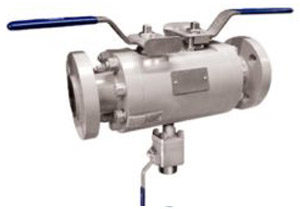Most national heating systems now are gas central heating that is made up of boiler and a set of radiators to provide heat to separate rooms or areas from your home. The boiler may be the core of a gas central heat and will pump water to the pipes feeding the radiators, which then, radiate heat.
It’s common however,https://www.kplokusa.com for radiators to become blocked or clogged with sludge and debris that can make a gas central heating system to under function and then lose heat. Any sludge in a radiator may also bring about the boiler itself to eventually become damaged because it could possibly be pumped through the device evoking the boilers pump to neglect that may end up being very costly to cure.
We have to therefore prevent damage to the boiler by regularly maintaining the radiators and ensuring they have been functioning correctly. If you are wondering how to know if a radiator gets sludge init then you’ll find some obvious signs like’cold spots’, where only regions of the radiator will probably be hot while others are clearly chilly.
Whatever the case, it is good practice to regularly maintain the system to ensure or prevent such a sludge from gathering in the system. Additionally, there are a range of additive you could employ in the water which will help out with keeping your central heating system clean.
Changing A Radiator
Altering a radiator is really rather simple and as long as you follow the correct procedures, it won’t take long to complete. You need to firstly ensure that the water source to the radiator itself is heated and also this can be achieved by turning the radiator valve completely down so that the isolating valve is in its closed position. Repeat this to the valve on the opposing side of the radiator to ensure both plumbing feeding the radiator will be now isolated and no water can enter the radiator. Lock guard valves are absolutely obvious if they have been deterred but using some thermostatic valves, it isn’t always obvious whenever they are in their remote place so make sure to make sure any thermostatic valve is completely isolated.
Once the radiator How double block and bleed valve Works was isolated from the machine, it is possible to then prepare to drain any water from it. That is accomplished by loosening the nut over the radiator valve that’s connected to the radiator. You might have to also use grips along side your spanner. Before loosening the nut, then place a shallow tray under the valve to grab any water since it expels from the radiator. You might also want a twist hand to move water. Do this for both valves.
Now that the radiator has been emptied, it is possible to take it off from the wall and then prepare it to maintenance. Take care with this as even without water in, some radiators are extremely heavy if you can, have a helper to assist you with this.
Fixing The Radiator
Pick out the radiator out into the garden or yard and turn it upside down. Take a hose and begin to flush it out with water until the water is running clear. Badly contaminated radiators may also want the addition of chemical agents that are available from the regional plumbers merchants.
Just take the radiator in a place back it onto the mounts on the wallsocket. Connect back the valves as they were and be certain they are securely nipped along together with your spanner. Older radiators could also require a number of turns of pfte tape before tightening.
When valves are nipped up properly, you can move to turn the heating valve straight back up in order that water will flow back into the radiators. Assess closely for almost any leaks as you do that. You need to return again to the boiler and add just a little water if need to match the water which has been drained earlier. Make sure that the water is in accordance with the manufacturers recommended settings. All you need to do today goes back to the radiator and also bleed it for atmosphere that can be done using a radiator bleed key which can be found form any DIY shop. Bleed the radiator before water flows throughout the bleed hole on top aspect of the radiator. Look at the radiator again for any escapes.



